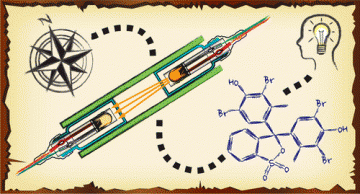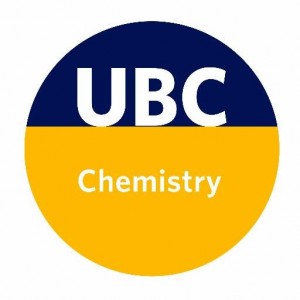New article: Build Your Own Photometer: A Guided-Inquiry Experiment To Introduce Analytical Instrumentation
By Jane Maxwell on October 28, 2015
 An article describing the development, testing, and evaluation of a new guided-inquiry experiment for UBC’s second-year analytical chemistry course (CHEM 211) has just been published in the Journal of Chemical Education!
An article describing the development, testing, and evaluation of a new guided-inquiry experiment for UBC’s second-year analytical chemistry course (CHEM 211) has just been published in the Journal of Chemical Education!
The CHEM 211 labs have seen many exciting changes over the past few years, including the introduction of several guided-inquiry experiments in which students research and develop their own designs and procedures for tackling an analytical problem. In the “Build your own Photometer” experiment, students research fundamental concepts in spectrophotometry, then apply their findings to design, build, and test a submersible photometer that can be used to monitor colour-change reactions such as titrations. You can read all about the experiment here.
This experiment and article are the products of a collaboration between Instructional and Research Faculty, students, and the CWSEI. Dr. José Rodríguez Núñez (CHEM 211 lab director) and Dr. Russ Algar (CHEM 211 instructor and research faculty) developed the concept and basic plan, Jessie Wang (a UBC chemistry undergraduate) developed and refined the procedures, and I interviewed and surveyed students in order to evaluate the success of the experiment. I’m very proud of the resulting article, and of the fantastic collaboration that made it happen.
Build Your Own Photometer: A Guided-Inquiry Experiment To Introduce Analytical Instrumentation.
Jessie J. Wang, José R. Rodríguez Núñez, E. Jane Maxwell, and W. Russ Algar
Journal of Chemical Education Article ASAP DOI: 10.1021/acs.jchemed.5b00426
Abstract: A guided-inquiry project designed to teach students the basics of spectrophotometric instrumentation at the second year level is presented. Students design, build, program, and test their own single-wavelength, submersible photometer using low-cost light-emitting diodes (LEDs) and inexpensive household items. A series of structured prelaboratory assignments guide students through the processes of researching background information, designing a photometer device, and developing their own procedure to test the performance of the device. Students also learn basic skills of data acquisition by programming an easy-to-use LabVIEW interface for their device. Using a colorimetric indicator dye, students use their photometers and LabVIEW interfaces to determine the endpoint of an acid–base titration and compare the linear response of their device against that of a commercially available spectrophotometer. Students who completed the experiment indicated that the experience improved their understanding of spectroscopy, as well as their critical thinking skills and research ability.
Posted in Articles | Tagged with analytical chemistry, DIY, guided inquiry, labs
 An article describing the development, testing, and evaluation of a new guided-inquiry experiment for UBC’s second-year analytical chemistry course (CHEM 211) has just been published in the Journal of Chemical Education!
An article describing the development, testing, and evaluation of a new guided-inquiry experiment for UBC’s second-year analytical chemistry course (CHEM 211) has just been published in the Journal of Chemical Education! 
Ahmedabad, in western India, is the largest city in the state of Gujarat. The Sabarmati River runs through its center. On the western bank is the Gandhi Ashram at Sabarmati, which displays the spiritual leader’s living quarters and artifacts. Across the river, the Calico Museum of Textiles, once a cloth merchant’s mansion, has a significant collection of antique and modern fabrics.
Ahmedabad
Ahmedabad, in western India, is the largest city in the state of Gujarat. The Sabarmati River runs through its center. On the western bank is the Gandhi Ashram at Sabarmati, which displays the spiritual leader’s living quarters and artifacts. Across the river, the Calico Museum of Textiles, once a cloth merchant’s mansion, has a significant collection of antique and modern fabrics.
Your article the experiment is very good
Thanks for sharing brother